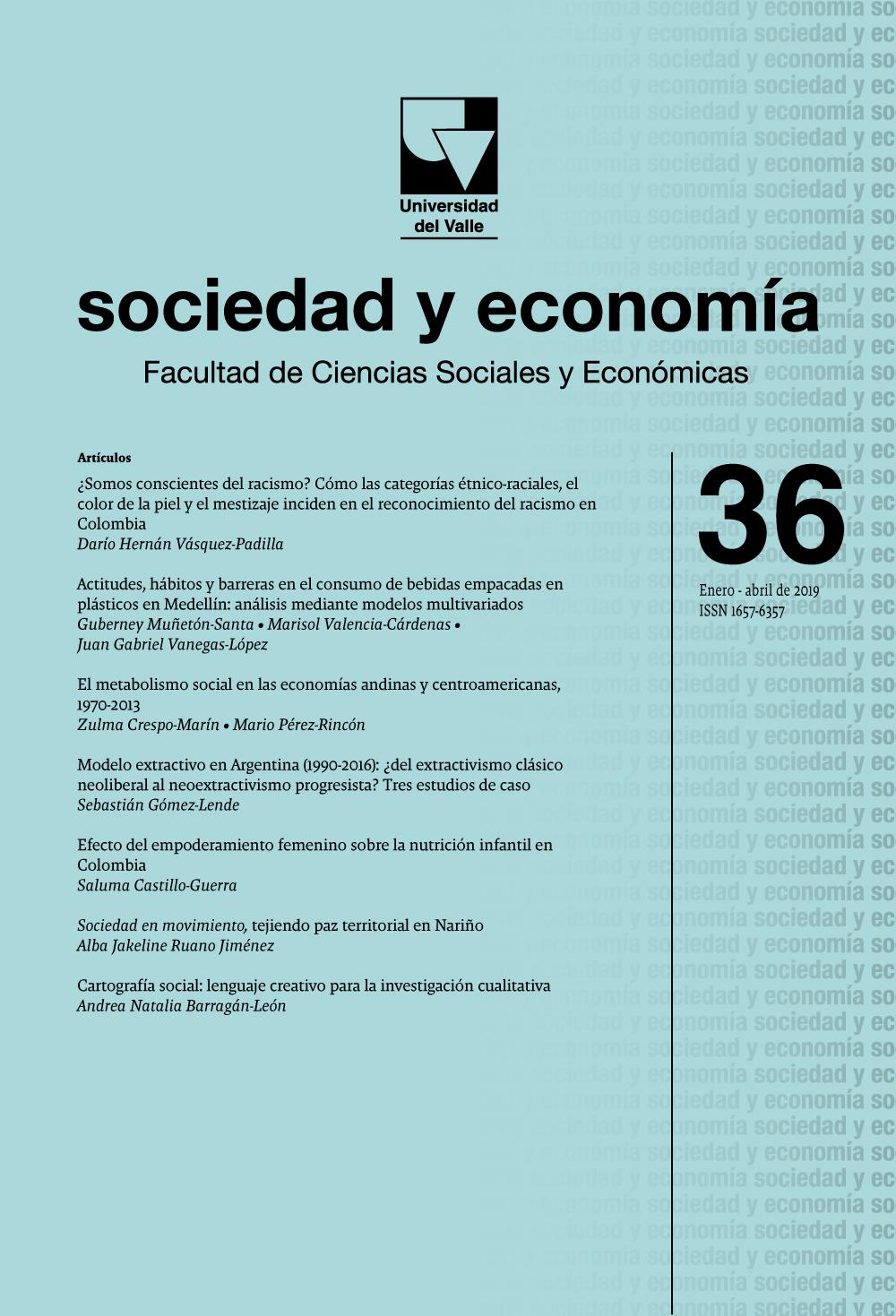The Social Metabolism in the Andean and Central American Economies, 1970-2013
Main Article Content
This article compares the economic and metabolic profiles of the Andean region and Central America by appl- ying Biophysical indicators based on the methodology of Material Flow Analysis (MFA) to data between 1970 and 2013, complemented with monetary indicators. First, productive specialization, extractive patterns of both regions and their material trade patterns are analysed; later on, the existence of points of decoupling are mea- sured. Monetarily speaking, there is a reprimarization and deindustrialization in Andes and a rise in the provi- ding of services in Latin America. In metabolic terms, there is an absolute objectification of both regions due to a change in metabolic patterns towards: i) Fossil fuels and minerals in the case of the Andes. ii) Agricultural biomass and construction materials in Central America. This is evidence of a transition towards an urban-in- dustrial regime, more present in the Andean zone and with a bigger stress on external market. The hypothesis of decoupling is only fulfilled within years in both analysed regions. These dynamics increase environmental pressures on these territories.

This work is licensed under a Creative Commons Attribution-NonCommercial 4.0 International License.
Revista sociedad y economía editada por la Facultad de Ciencias Sociales y Económicas de la Universidad del Valle se encuentra bajo una Licencia Internacional Creative Commons Atribución - No comercial 4.0
Basada en una obra en http://sociedadyeconomia.univalle.edu.co





